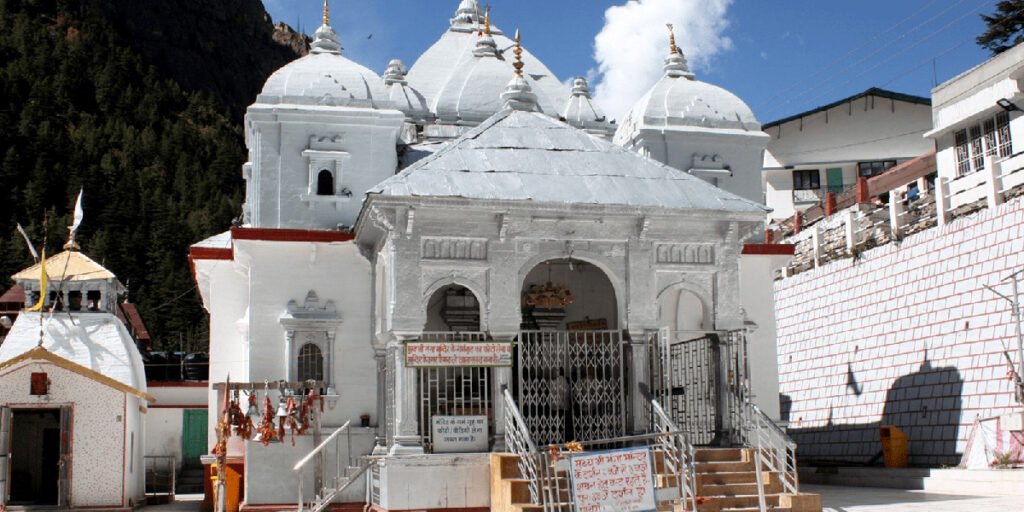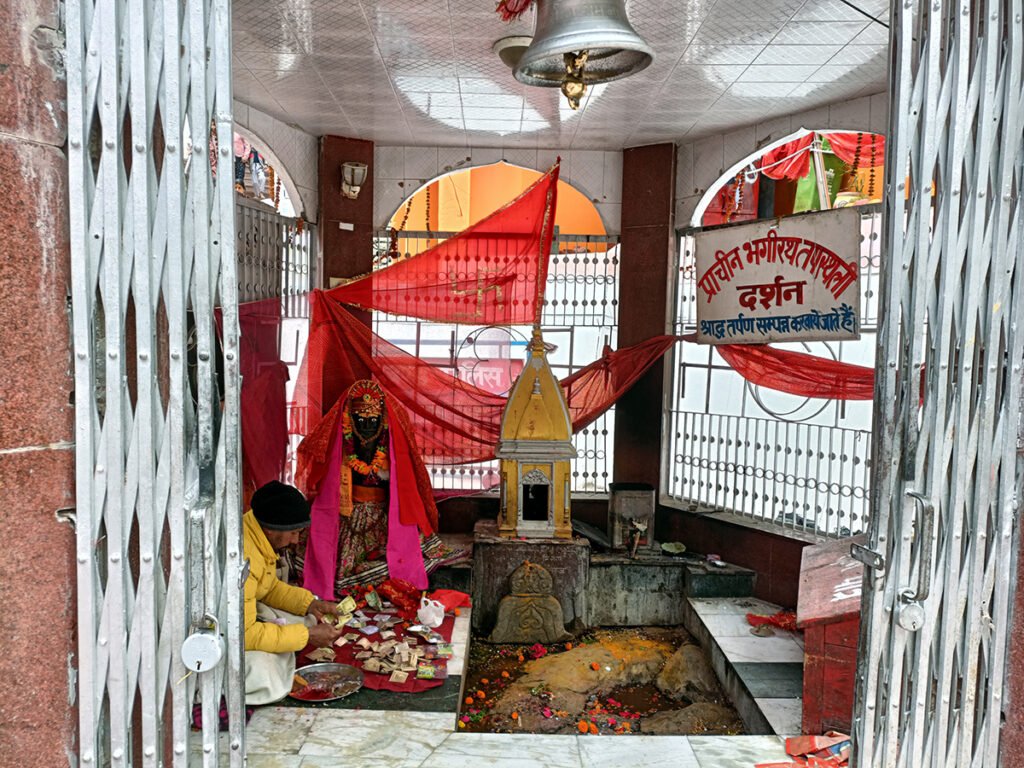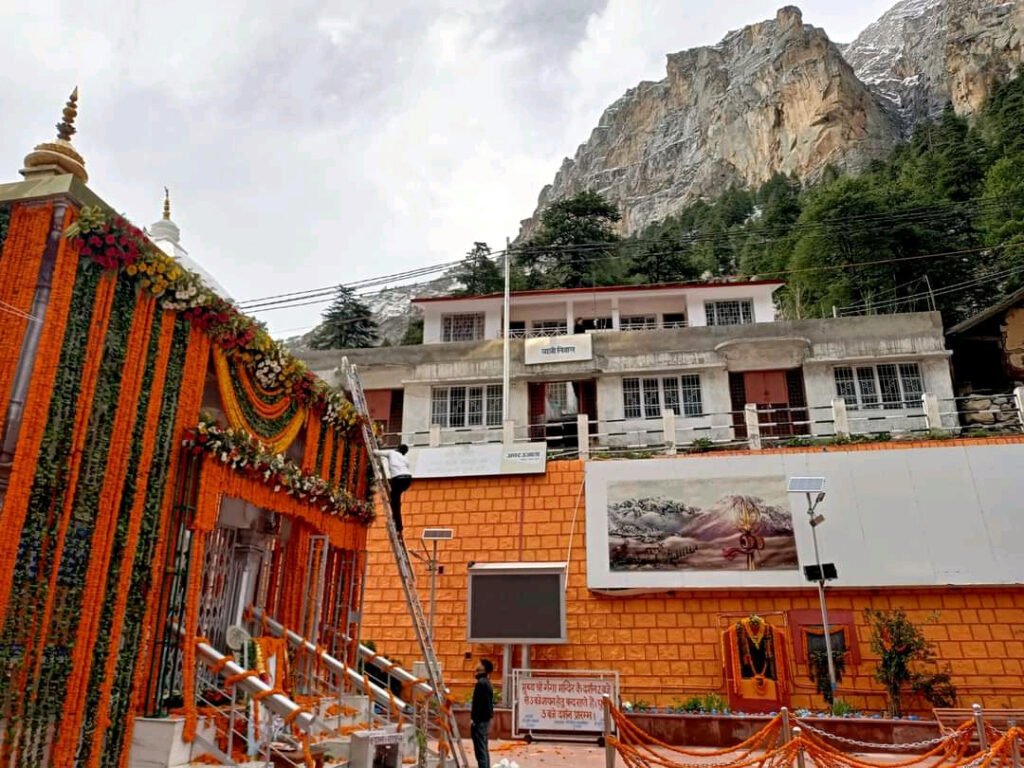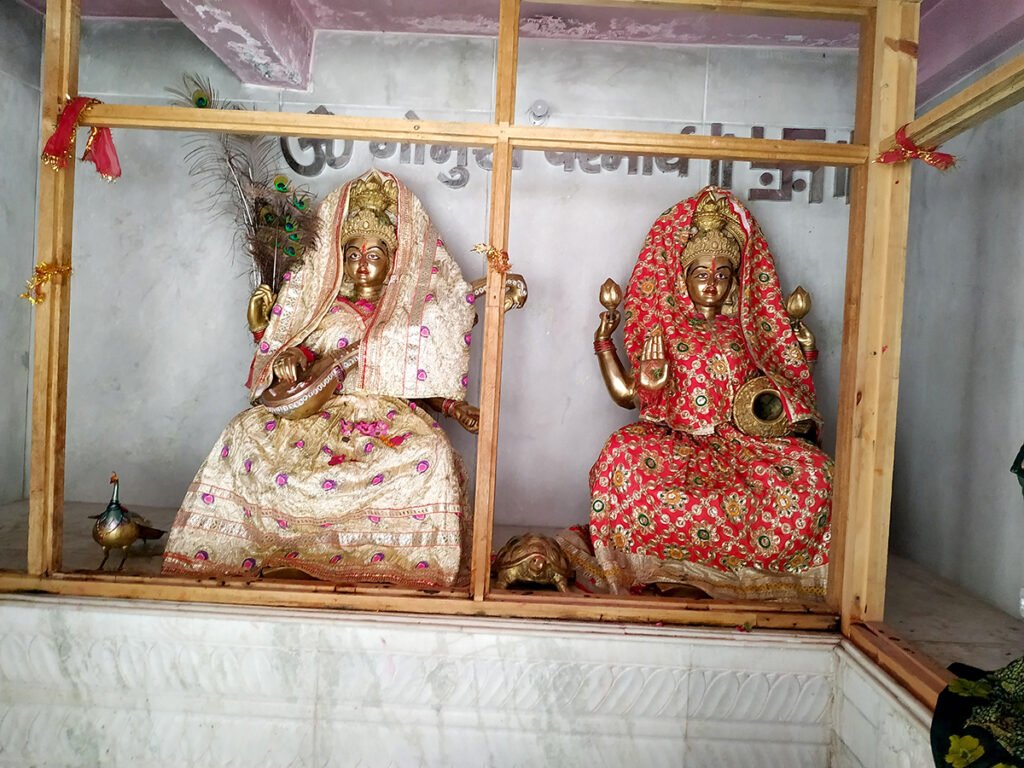Gangotri Temple | Complete Guide
Gangotri Temple is a renowned Hindu pilgrimage site situated in the Uttarkashi district of Uttarakhand, India. It is one of the Char Dham destinations, along with Yamunotri, Kedarnath, and Badrinath, which are considered the most sacred pilgrimage sites in Hinduism.

Dedicated to the goddess Ganga, this Temple is located at an altitude of approximately 3,100 meters (10,200 feet) above sea level, on the banks of the Bhagirathi River. The temple is believed to be the place where the River Ganges (Ganga) descended to Earth from Lord Shiva’s locks.
Contents
- 1 Here are some key aspects of Gangotri Temple:
- 2 Gangotri Temple History:
- 3 Why is Gangotri famous?
- 4 Places to visit near Gangotri temple
- 5 Gangotri Temple timing:
- 6 FAQ:
- 6.1 Q: Where is Gangotri Temple located?
- 6.2 Q: What is the significance of Gangotri Temple?
- 6.3 Q: What are the best times to visit Gangotri Temple?
- 6.4 Q: What are the things to do at Gangotri Temple?
- 6.5 Q: What are the safety tips for visiting Gangotri Temple?
- 6.6 Q: What are the other temples near Gangotri Temple?
- 7 How to reach Gangotri Temple:
- 8 Google Maps:
Here are some key aspects of Gangotri Temple:
Legend and Mythology: According to Hindu mythology, it is believed that King Bhagirath, through rigorous penance, brought the sacred Ganges to Earth to absolve the sins of his ancestors. The temple commemorates this divine event and is highly revered by devotees.
Architecture: The Gangotri shrine is constructed in the traditional Hindu temple architectural style. It features a white stone structure with intricate carvings and a prominent spire (shikara) at the top. The temple is surrounded by snow-capped mountains and offers breathtaking views of the Himalayan peaks.
Main Shrine: The main deity of the temple is the goddess Ganga, represented in the form of a silver idol adorned with traditional clothing and ornaments. The idol is placed in the sanctum sanctorum (garbha griha) of the shrine, and devotees offer prayers and perform rituals to seek the blessings of the goddess.
Opening and Closing Dates: This Shrine opens its doors to devotees during the summer months when the region is accessible. The temple usually opens around late April or early May and closes in November before the onset of winter. The exact opening and closing dates may vary each year and are determined by the Hindu calendar and weather conditions.
Ganga Aarti: One of the significant rituals performed at Gangotri Temple is the Ganga Aarti, a ceremonial worship of the River Ganges. Devotees gather at the shrine during evening time to witness the aarti, where priests offer prayers, light oil lamps, and chant hymns in praise of the river goddess. The sight of the illuminated lamps and the serene atmosphere create a spiritually uplifting experience.
Trekking and Nearby Attractions: To reach this shrine, visitors have to undertake a trek of around 19 kilometers (11.8 miles) from the town of Harsil. The trekking route offers picturesque landscapes and takes you through dense forests and meadows. Nearby attractions include the Bhagirath Shila, where King Bhagirath is believed to have performed his penance, and the Gaumukh glacier, which is considered the source of the River Ganges.
Read More>> Miraculous Powers of Shri Khade Ganesh Temple Kota Kashivpur
Gangotri Temple History:
According to Hindu mythology, the River Ganga is considered a divine goddess who descended from heaven to cleanse the sins of humanity. The story goes that King Bhagirath, an ancestor of Lord Rama, undertook severe penance and meditation to bring the river to Earth. Pleased by his devotion, Ganga agreed to descend to Earth. However, her powerful flow threatened to wash away the Earth. To mitigate the impact, Lord Shiva caught the river in his matted locks, allowing the water to flow gently from his hair. This event is depicted in various forms of artwork and sculptures found in the temple.
The Temple is believed to have been built in the 18th century by the Gurkha general Amar Singh Thapa. Over the years, the temple has undergone several renovations and restorations. It is constructed in the traditional North Indian architectural style and is made of white granite.
Read More>> Tripura Sundari Temple in Tripura

Why is Gangotri famous?
Source of the Ganges: Gangotri is considered the source of the River Ganges, which is one of the most sacred rivers in Hinduism. According to Hindu mythology, the Ganges is believed to have descended from heaven to Earth to cleanse the sins of mankind. The river is highly revered and worshipped by millions of people.
Char Dham Pilgrimage: This shrine is one of the four sites that constitute the Char Dham pilgrimage circuit in the Indian Himalayas. The other three sites are Yamunotri, Kedarnath, and Badrinath. Undertaking the Char Dham Yatra is considered highly auspicious and spiritually significant for Hindus. It is believed to provide spiritual liberation and cleansing of sins.
Gangotri Temple: It’s dedicated to the goddess Ganga, is the main attraction in Gangotri. The temple is believed to be over 300 years old and holds immense religious and historical significance. It is visited by a large number of devotees who come to seek blessings and offer prayers to the goddess.
Scenic Beauty: It’s located in the breathtakingly beautiful Garhwal Himalayas, surrounded by snow-capped peaks and serene natural landscapes. The region offers panoramic views, lush green valleys, and pristine mountain ranges. It attracts nature enthusiasts, photographers, and trekkers who come to experience the awe-inspiring beauty of the Himalayas.
Trekking and Adventure: Temple serves as a base for various trekking routes and adventure activities in the region. Treks like the Gangotri Glacier Trek, Tapovan Trek, and Nandanvan Trek are popular among adventure seekers. The area offers opportunities for camping, mountaineering, and exploring the rugged terrain.
Spiritual Significance: This shrine is considered a place of immense spiritual significance. It is believed that taking a dip in the holy waters of the Ganges at Gangotri can wash away sins and bring spiritual purification. Many pilgrims visit this place to perform religious rituals and seek spiritual solace.
Read More>> Kanipakam Varasiddhi Vinayaka Swamy

Places to visit near Gangotri temple
Gaumukh Glacier: Located around 18 kilometers, Gaumukh is the snout of the Gangotri Glacier, from where the River Ganges originates. It is a popular trekking destination and offers stunning views of the glacier and surrounding peaks.
Tapovan: Situated above the shine, Tapovan is a scenic alpine meadow known for its serene ambiance and panoramic views of the surrounding Himalayan peaks, including Shivling Peak. It is a popular spot for meditation and yoga practitioners.
Kedar Tal: Around 17 kilometers, Kedar Tal is a glacial lake nestled amidst the snow-covered peaks. It is considered a sacred lake and offers a breathtaking trekking experience through picturesque landscapes.
Harsil: Located approximately 25 kilometers, Harsil is a charming village situated on the banks of the Bhagirathi River. Known for its scenic beauty, apple orchards, and temples, Harsil is an ideal place to relax and soak in the tranquility of the Himalayas.
Bhairon Ghati: Situated about 10 kilometers, Bhairon Ghati is a revered shrine dedicated to Bhairon, a form of Lord Shiva. The shrine is perched on a cliff and offers panoramic views of the surrounding valleys and mountains.
Gangnani: Located around 40 kilometers, Gangnani is known for its hot water springs and natural beauty. The hot springs are believed to possess therapeutic properties, and visitors often take a dip for rejuvenation.
Uttarkashi: The town of Uttarkashi, approximately 100 kilometers from Gangotri, is a popular base for several trekking expeditions in the region. It is also home to ancient temples, including the Vishwanath Temple and the Nehru Institute of Mountaineering.
Gangotri Temple timing:
The temple timings of Gangotri Temple are as follows:
Morning: 6:15 AM to 2:00 PM
Evening: 3:00 PM to 9:30 PM
The temple is closed for darshan during the following times:
Lunch break: 2:00 PM to 3:00 PM
Aarti: 6:00 AM and 7:45 PM
It’s also closed during the winter months, from November to April.

FAQ:
Q: Where is Gangotri Temple located?
A: Gangotri Temple is located in the Gangotri town of Uttarakhand, India. It is situated at an altitude of 3,144 meters (10,315 feet) above sea level on the banks of the Bhagirathi River, which is the main headstream of the Ganges.
Q: What is the significance of Gangotri Temple?
A: Gangotri Temple is one of the most sacred Hindu temples in the world. It is believed to be the place where the goddess Ganga descended from heaven to earth. The temple is also a popular pilgrimage site for Hindus who come to worship the goddess Ganga and to take a dip in the holy river Bhagirathi.
Q: What are the best times to visit Gangotri Temple?
A: The best time to visit Gangotri Temple is during the summer months (April to June) when the weather is pleasant and the roads are open. The temple is also open during the winter months (October to March), but the weather can be quite cold and the roads may be closed due to snowfall.
Q: What are the things to do at Gangotri Temple?
A: The main activity at Gangotri Temple is to worship the goddess Ganga and to take a dip in the holy river Bhagirathi. Visitors can also visit the Gangotri Glacier, which is located about 19 kilometers from the temple. The glacier is the source of the Bhagirathi River, and it is a popular trekking destination.
Q: What are the safety tips for visiting Gangotri Temple?
A: Here are some safety tips for visiting Gangotri Temple:
- Be prepared for the high altitude. Gangotri Temple is located at an altitude of 3,144 meters (10,315 feet), so it is important to be acclimatized to the altitude before visiting the temple.
- Be aware of the dangers of the Bhagirathi River. The river can be very fast and dangerous, especially during the monsoon season. It is important to take precautions when swimming in the river, and to avoid swimming in areas where the current is strong.
- Be careful of the monkeys. There are many monkeys in the area around Gangotri Temple. It is important to be careful of the monkeys, as they can be aggressive and steal food from visitors.
- Be respectful of the Hindu religion. Gangotri Temple is a sacred Hindu temple, so it is important to be respectful of the religion and the customs.
Q: What are the other temples near Gangotri Temple?
A: There are a number of other temples near Gangotri Temple, including:
- Yamunotri Temple: This temple is dedicated to the goddess Yamuna, who is the sister of the goddess Ganga. Yamunotri Temple is located about 108 kilometers from Gangotri Temple.
- Kedarnath Temple: This temple is dedicated to the god Shiva. Kedarnath Temple is located about 232 kilometers from Gangotri Temple.
- Badrinath Temple: This temple is dedicated to the god Vishnu. Badrinath Temple is located about 236 kilometers from Gangotri Temple.

How to reach Gangotri Temple:
Reach the Base Camp: The journey to Gangotri starts from the town of Uttarkashi, which serves as the base camp for the temple. Uttarkashi is well-connected by road and can be reached from major nearby towns and cities like Rishikesh, Haridwar, and Dehradun. You can hire a taxi or take a bus to reach Uttarkashi.
Road Journey to Gangotri: From Uttarkashi, the next leg of the journey involves a road trip to Gangotri. The distance between Uttarkashi and shrine is approximately 100 kilometers (62 miles), and the road journey takes around 4-5 hours, depending on the traffic and road conditions.
Public Transport: There are regular bus services operated by the Uttarakhand State Transport Corporation (UTC) that ply between Uttarkashi and Shrine. You can inquire about the bus timings and ticket availability at the UTC bus station in Uttarkashi. Private taxis and shared jeeps are also available for hire, providing more flexibility and convenience.
Private Vehicle: If you have your own vehicle or have hired a private taxi, you can drive from Uttarkashi to the temple. The route passes through scenic landscapes, winding mountain roads, and picturesque villages. It is advisable to check the road conditions and weather updates before embarking on the journey.
Trekking to Gangotri: For those looking for a more adventurous and traditional experience, you can undertake a trek from the town of Gangnani to the temple. The trek distance is approximately 14 kilometers (8.7 miles) and takes around 5-6 hours, depending on your pace. The trail offers beautiful views of the Himalayan mountains and the surrounding natural landscapes.
Please note that this place is situated at a high altitude, so it is important to acclimatize properly and be prepared for any altitude-related challenges. It is advisable to carry essentials like comfortable clothing, sturdy trekking shoes, warm layers, rain gear, sufficient water, snacks, and any necessary medication.
